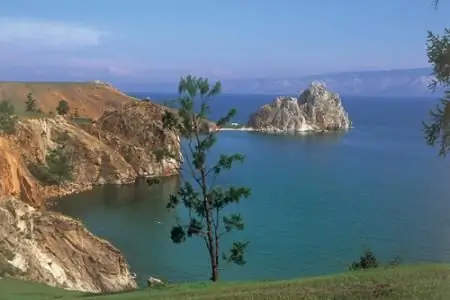- Author Harold Hamphrey [email protected].
- Public 2023-12-17 10:06.
- Last modified 2025-01-24 11:10.
In the Tbilisi basin, on the two banks of the Kura, at an altitude of 525 meters is the capital of Georgia - Tbilisi. The city is stretched out in a narrow strip along the Kura and along the slopes of the mountains. In the very southeast is its historical center - the Old Town with narrow streets, small houses made of stone, wood and brick. They are decorated with wooden carved balconies.

At the beginning of the nineteenth century, the center of today's Tbilisi, the New City, appeared. It had a rectangular grid of streets. Many public buildings were built, as a rule, in the style of classicism: Zubalashvili's hotel (today it is the Museum of Arts), the Headquarters of the Caucasian Army, the Governor's Palace. At the beginning of the twentieth century, banks, tenement houses, administrative buildings were built.
According to archaeologists, the territory where the capital of Georgia is now located was inhabited by people in the 4th -3rd millennium BC. The first written mention of the city dates back to the fourth millennium BC.
It is believed that Tbilisi got its name thanks to warm sulfur springs (in Georgian, "tbili" means "warm").
The capital of Georgia is the most ancient city of the state. Its history includesfifteen centuries. In Tbilisi, the industrial facilities of the Soviet era and the oldest buildings of the early Christian period are surprisingly intertwined.

Mekheti - the oldest place of human settlement in the territory of the Georgian state This unique district of Tbilisi is built on the banks of the Kura on a high cliff. At that time, the monarchs built their palaces there. Today, the most famous is the palace of Vakhtang Gorgasal, which gave the name to this area of the city. Translated from local dialects, it means "near the Palace".
The main attraction of Mekheti is the Assumption Church, which was built in the thirteenth century. In Soviet times, the Beria government tried to destroy it, but for unknown reasons did not carry out its plan. In the 1980s, the church in Mekheti regained its status.
The capital of Georgia has its own funicular. Its construction began in 1900, when many predicted a huge rise in popularity for Tbilisi. There was an amazing similarity between Mount David and the famous volcano Vesuvius, which also had a cable car. In 1905, all construction work was completed, and the funicular with three stations became a favorite place for secular recreation. Later, a park was laid out on the mountain plateau and various attractions were installed in it, a large restaurant appeared at the middle station.
Georgia, whose capital is considered one of the greenest cities in the world, is proud of Tbilisi. Residents of the city always talk with special warmth about the Botanical Garden, whichis located in the very center of the Georgian capital. It was created at the end of the nineteenth century. Over the long history of this reserve, its area has exceeded 15 hectares, beautiful bridges have been laid over the most difficult parts of the garden, picturesque man-made fountains and waterfalls have appeared.

Old Tbilisi is gradually being restored. Narrow streets are being rebuilt. Old houses are being turned into hotels, and ancient wine cellars are being turned into cozy cafes. Everything here is steeped in antiquity. This is especially noticeable in the famous Tbilisi courtyards, between which mosques and synagogues are "attached".






